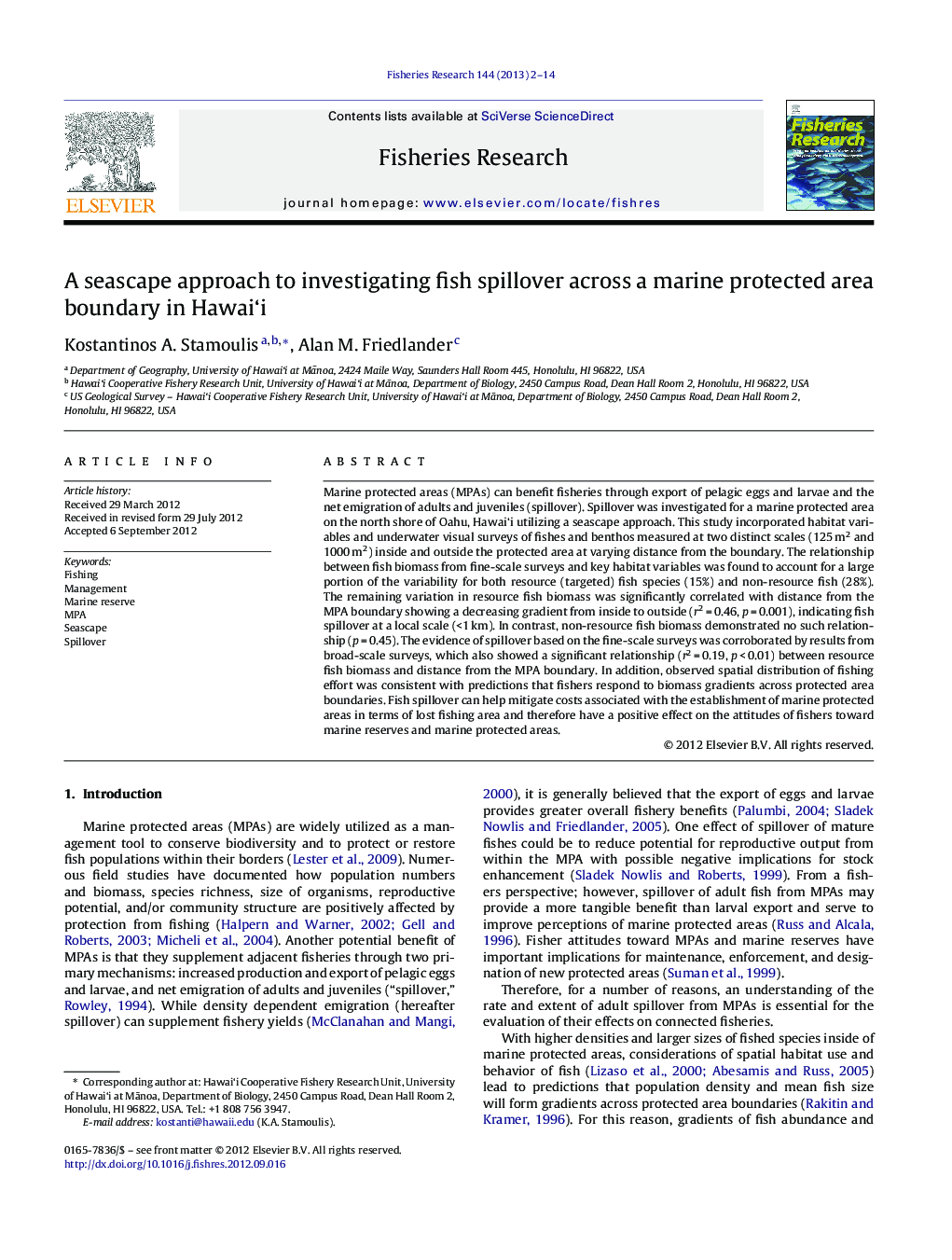| Article ID | Journal | Published Year | Pages | File Type |
|---|---|---|---|---|
| 6386016 | Fisheries Research | 2013 | 13 Pages |
Marine protected areas (MPAs) can benefit fisheries through export of pelagic eggs and larvae and the net emigration of adults and juveniles (spillover). Spillover was investigated for a marine protected area on the north shore of Oahu, Hawai'i utilizing a seascape approach. This study incorporated habitat variables and underwater visual surveys of fishes and benthos measured at two distinct scales (125 m2 and 1000 m2) inside and outside the protected area at varying distance from the boundary. The relationship between fish biomass from fine-scale surveys and key habitat variables was found to account for a large portion of the variability for both resource (targeted) fish species (15%) and non-resource fish (28%). The remaining variation in resource fish biomass was significantly correlated with distance from the MPA boundary showing a decreasing gradient from inside to outside (r2 = 0.46, p = 0.001), indicating fish spillover at a local scale (<1 km). In contrast, non-resource fish biomass demonstrated no such relationship (p = 0.45). The evidence of spillover based on the fine-scale surveys was corroborated by results from broad-scale surveys, which also showed a significant relationship (r2 = 0.19, p < 0.01) between resource fish biomass and distance from the MPA boundary. In addition, observed spatial distribution of fishing effort was consistent with predictions that fishers respond to biomass gradients across protected area boundaries. Fish spillover can help mitigate costs associated with the establishment of marine protected areas in terms of lost fishing area and therefore have a positive effect on the attitudes of fishers toward marine reserves and marine protected areas.
⺠Fish assemblage characteristics were measured both inside and outside an MPA along a gradient of distance from the boundary. ⺠Fish richness, density, and biomass were significantly higher inside the MPA then outside. ⺠After removing the variability in fish biomass that could be attributed to habitat, there was a decreasing gradient of biomass across the boundary for those species targeted by fishers. This pattern was not found for species not targeted by fishers. ⺠The negative gradient of targeted fish biomass outside the reserve coincided with a negative gradient of fishing effort.
